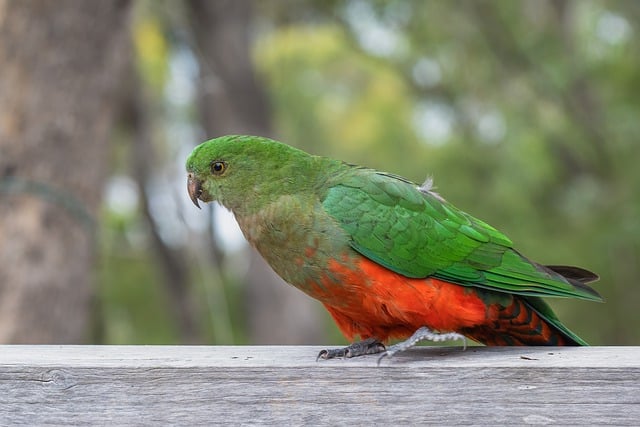



When it comes to physical appearance, there are several key differences between male and female parrots. These differences can vary depending on the species of parrot, but there are some general characteristics that can help you determine the sex of a parrot.
One of the most noticeable differences between male and female parrots is their coloration. In many species, males tend to have brighter and more vibrant colors compared to females. This is especially true for species like the Eclectus parrot, where males have bright green feathers while females have a combination of red and blue feathers. However, it's important to note that not all species exhibit such distinct color differences between males and females.
Another difference between male and female parrots is their vocalizations. Males often have more complex and varied vocalizations compared to females. They may have a wider range of calls, including whistles, squawks, and mimicry of human speech. Females, on the other hand, tend to have simpler and less varied vocalizations.
Male and female parrots can also exhibit different behaviors. Males are often more territorial and aggressive, especially during breeding season. They may engage in displays of dominance, such as puffing up their feathers and vocalizing loudly. Females, on the other hand, are generally more nurturing and may exhibit behaviors associated with nesting and caring for their young.
One of the most obvious differences between male and female parrots is their reproductive organs. Males have a pair of testes located near their kidneys, while females have a pair of ovaries. These reproductive organs play a crucial role in the breeding process and are responsible for producing eggs in females and sperm in males.
In some species of parrots, there can be differences in size and weight between males and females. Males may be slightly larger and heavier compared to females. However, this is not always the case, and there are many species where there is no significant difference in size between the sexes.
Feather patterns can also differ between male and female parrots. Males may have more elaborate and intricate feather patterns, especially on their head and chest. Females, on the other hand, may have simpler and less vibrant feather patterns. These differences in feather patterns can help attract mates and play a role in courtship displays.
While it's important to remember that each parrot has its own unique personality, there are some general differences in personality traits between male and female parrots. Males are often more outgoing and adventurous, while females tend to be more reserved and cautious. However, these differences can vary depending on the individual bird and their upbringing.
The differences between male and female parrots are often referred to as sexual dimorphism. Sexual dimorphism can be seen in various aspects of a parrot's appearance, behavior, and physiology. It is a result of the different roles that males and females play in reproduction and the need to attract mates.
In many species of parrots, males and females have different parenting roles. Males may be more involved in courtship and mating rituals, while females take on the primary responsibility of incubating the eggs and caring for the chicks. However, there are also species where both parents share the responsibilities of incubation and chick-rearing.
In conclusion, there are several differences between male and female parrots. These differences can be observed in their physical appearance, coloration, vocalizations, behavior, reproductive organs, size and weight, feather patterns, personality traits, sexual dimorphism, and parenting roles. Understanding these differences can help you better understand and care for your pet parrot.
Leave a Reply
Related posts